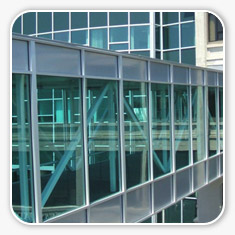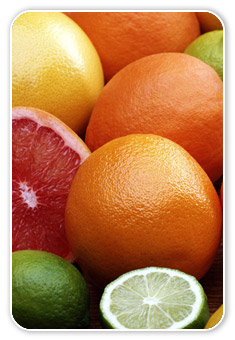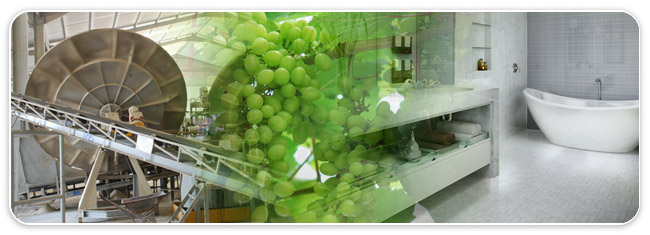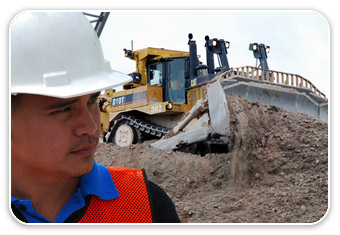
|
PRODUCTS | Barite/Baryte  | Dolomite | Dolomite  | Silica Sand | Silica Sand  | Limestone | Limestone  | Zinc / Silver / Copper | Zinc / Silver / Copper  | Iron ore | Iron ore  | Coal | Coal 
DOLOMITE (CaMg(CO3)2
General Information
 Dolomite, composed of calcium and magnesium carbonate (CaCO3.MgCO3), has a theoretical composition of 45.65% MgCO3 and 54.35% CaCO3. In addition to its importance as crushed stone, it has a wide variety of industrial applications. It is used in the steelmaking industry as a flux and for manufacture of refractories for basic open hearth furnaces, Bessemer converters and steel ladles. In the cement industry it is used in refractories which line rotary cement kilns. It is an ingredient in the manufacture of plate glass and fibreglass, and has agricultural applications as a fertiliser, soil conditioner and stockfeed supplement. Dolomite, composed of calcium and magnesium carbonate (CaCO3.MgCO3), has a theoretical composition of 45.65% MgCO3 and 54.35% CaCO3. In addition to its importance as crushed stone, it has a wide variety of industrial applications. It is used in the steelmaking industry as a flux and for manufacture of refractories for basic open hearth furnaces, Bessemer converters and steel ladles. In the cement industry it is used in refractories which line rotary cement kilns. It is an ingredient in the manufacture of plate glass and fibreglass, and has agricultural applications as a fertiliser, soil conditioner and stockfeed supplement.
 The specific gravity of dolomite is 2.85. This means that a pure dolomite weighs 2.85 times as much as an equal volume of pure water. The specific gravity of a mineral can be used to help distinguish it from other minerals. The hardness of dolomite is 4 on the Mohs hardness scale. This means it is harder than a piece of copper ( a penny, for example) and softer than mild steel (like a knife blade). The hardness of a mineral is also another characteristic used to identify it from other minerals. The specific gravity of dolomite is 2.85. This means that a pure dolomite weighs 2.85 times as much as an equal volume of pure water. The specific gravity of a mineral can be used to help distinguish it from other minerals. The hardness of dolomite is 4 on the Mohs hardness scale. This means it is harder than a piece of copper ( a penny, for example) and softer than mild steel (like a knife blade). The hardness of a mineral is also another characteristic used to identify it from other minerals.
Applications
 Dolomite is used as an ornamental stone, a concrete aggregate and as a source of magnesium oxide. It is an important petroleum reservoir rock, and serves as the host rock for large strata-bound Mississippi Valley-Type (MVT) ore deposits of base metals (that is, readily oxidized metals) such as lead, zinc, and copper. Where calcite limestone is uncommon or too costly, dolomite is sometime used in its place as a flux (impurity remover) for the smelting of iron and steel.In horticulture, dolomite and dolomitic limestone are added to soils and soilless potting mixes to lower their acidity ("sweeten" them). Home and container gardening are common examples of this use. Dolomite is used as an ornamental stone, a concrete aggregate and as a source of magnesium oxide. It is an important petroleum reservoir rock, and serves as the host rock for large strata-bound Mississippi Valley-Type (MVT) ore deposits of base metals (that is, readily oxidized metals) such as lead, zinc, and copper. Where calcite limestone is uncommon or too costly, dolomite is sometime used in its place as a flux (impurity remover) for the smelting of iron and steel.In horticulture, dolomite and dolomitic limestone are added to soils and soilless potting mixes to lower their acidity ("sweeten" them). Home and container gardening are common examples of this use.
 The inherent differences between dolomite and calcite drive the applications for dolomite. Dolomite is chosen for many construction and building product applications due to its increased hardness and density. Asphalt and concrete applications prefer dolomite as a filler for its higher strength and hardness. Dolomite also finds use in a number of applications as a source of magnesium such as glass and ceramics manufacture, as well as a sintering agent in iron ore pelletization and as a flux agent in steel making. Farmers use dolomite for agricultural pH control. The chemical industry uses the mineral dolomite in making magnesium salts including magnesia, magnesium oxide (MgO), which is used in pharmaceuticals. The inherent differences between dolomite and calcite drive the applications for dolomite. Dolomite is chosen for many construction and building product applications due to its increased hardness and density. Asphalt and concrete applications prefer dolomite as a filler for its higher strength and hardness. Dolomite also finds use in a number of applications as a source of magnesium such as glass and ceramics manufacture, as well as a sintering agent in iron ore pelletization and as a flux agent in steel making. Farmers use dolomite for agricultural pH control. The chemical industry uses the mineral dolomite in making magnesium salts including magnesia, magnesium oxide (MgO), which is used in pharmaceuticals.
 Dolomite is chiefly used as refractory, ramming, and fettling material in steel melting shop, and as fluxing material in blast furnace operation in secondary steel and ferromanganese manufacture. To a lesser extent it is used in the glass industry especially in sheet-glass manufacture. It also finds use in the manufacture of mineral wool. Dolomite is chiefly used as refractory, ramming, and fettling material in steel melting shop, and as fluxing material in blast furnace operation in secondary steel and ferromanganese manufacture. To a lesser extent it is used in the glass industry especially in sheet-glass manufacture. It also finds use in the manufacture of mineral wool.
 In England, dolomite has become a useful source for the production of magnesite by reacting calcined dolomite with sea-water. The UK is meeting nearly 50% of her magnesite requirements by this method. Dolomite is also a good source of magnesium metal. The magnesium metal is extracted from dolomite by the well-known fero-silicon process. In England, dolomite has become a useful source for the production of magnesite by reacting calcined dolomite with sea-water. The UK is meeting nearly 50% of her magnesite requirements by this method. Dolomite is also a good source of magnesium metal. The magnesium metal is extracted from dolomite by the well-known fero-silicon process. |
 |
 dolomite lime is the best to raise ph of peat based soiless mixes, plus is a source of calcium and magnesium. Dolomite acts slowly and continuously, while the hydrated lime acts almost instantly. You can get dolomite in two forms, granular and powdered. The granular is better over time, while the powdered will start working sooner. A mix of the two is best for all around use, but for short term use like what we are doing, finer is better. As peat and other organic amendments breas down, acids are created that raise your ph out of the recommended ph range. Adding about 5 cups of lime per commercial bale of soiless mix will conteract this rise. I add 1 to 2 tbsp per gallon of soiless mix. It is very important not to overlime. Too much will lead to iron chlorosis and reduces the availability of manganese to your plants. dolomite lime is the best to raise ph of peat based soiless mixes, plus is a source of calcium and magnesium. Dolomite acts slowly and continuously, while the hydrated lime acts almost instantly. You can get dolomite in two forms, granular and powdered. The granular is better over time, while the powdered will start working sooner. A mix of the two is best for all around use, but for short term use like what we are doing, finer is better. As peat and other organic amendments breas down, acids are created that raise your ph out of the recommended ph range. Adding about 5 cups of lime per commercial bale of soiless mix will conteract this rise. I add 1 to 2 tbsp per gallon of soiless mix. It is very important not to overlime. Too much will lead to iron chlorosis and reduces the availability of manganese to your plants.
 |
Geology
 แหล่งแร่โดโลไมต์ ของ PANDS GROUP ตั้งอยู่ที่ ตำบลวังด้ง อำเภอเมือง จังหวัดกาญจนบุรี แหล่งแร่เกิดในชั้นหิน ยุคเพอร์เมียน ประกอบด้วยหินโดโลไมต์ หินอ่อน หินฟิลไลต์ และหินควอร์ตไซต์ แร่โดโลไมต์ มีสีขาว เหลือง และชมพู มีเนื้อแน่นแข็ง มีผลวิเคราะห์ทางเคมีโดยเฉลี่ย CaO 30-31% MgO 20.5-21.0% และความแข็ง 3.5-4.0 การเกิดของแร่โดโลไมต์ เกิดแบบโดโลมิไตเซชั่น (Dolomitization) โดยมีการแทนที่ของธาตุแมกนีเซียม ในแคลเซียมคาร์บอเนต (CaCO3) จากน้ำทะเลที่มีปริมาณแมกนีเซียมสูงอย่างสมบูรณ์ ภายหลังมีการแปรเปลี่ยนภายใต้ความร้อน และความกดดันสูงมาก จนเกิดเป็นแหล่งแร่โดโลไมต์ขนาดใหญ่และเป็นเนื้อเดียวตลอด ปริมาณแหล่งแร่สำรอง ของ PANDS GROUP ที่จังหวัดกาญจนบุรีมีประมาณ 150 200 ล้านเมตริกตัน แหล่งแร่โดโลไมต์ ของ PANDS GROUP ตั้งอยู่ที่ ตำบลวังด้ง อำเภอเมือง จังหวัดกาญจนบุรี แหล่งแร่เกิดในชั้นหิน ยุคเพอร์เมียน ประกอบด้วยหินโดโลไมต์ หินอ่อน หินฟิลไลต์ และหินควอร์ตไซต์ แร่โดโลไมต์ มีสีขาว เหลือง และชมพู มีเนื้อแน่นแข็ง มีผลวิเคราะห์ทางเคมีโดยเฉลี่ย CaO 30-31% MgO 20.5-21.0% และความแข็ง 3.5-4.0 การเกิดของแร่โดโลไมต์ เกิดแบบโดโลมิไตเซชั่น (Dolomitization) โดยมีการแทนที่ของธาตุแมกนีเซียม ในแคลเซียมคาร์บอเนต (CaCO3) จากน้ำทะเลที่มีปริมาณแมกนีเซียมสูงอย่างสมบูรณ์ ภายหลังมีการแปรเปลี่ยนภายใต้ความร้อน และความกดดันสูงมาก จนเกิดเป็นแหล่งแร่โดโลไมต์ขนาดใหญ่และเป็นเนื้อเดียวตลอด ปริมาณแหล่งแร่สำรอง ของ PANDS GROUP ที่จังหวัดกาญจนบุรีมีประมาณ 150 200 ล้านเมตริกตัน
Mining and Production
 แหล่งแร่โดโลไมต์ของ PANDS GROUP อยู่ที่จังหวัด กาญจนบุรี เป็นแหล่งแร่ที่สมบูรณ์ที่สุดในประเทศไทย เป็นแหล่งแร่ที่มีคุณภาพสูงสม่ำเสมอ (Homogeneous) ทั้งแหล่ง ลักษณะการทำเหมืองจะทำแบบเหมืองเปิด (open pit) และขั้นบันได (Benching Method) ตามหลักวิชาการ และมาตรฐาน วิศกรรมเหมืองแร่ ซึ่งแร่ที่ได้จากการทำเหมือง จะถูกนำมาบดย่อยลดขนาด และคัดขนาดให้เหมาะสม กับความต้องการของลูกค้า โดยใช้เครื่องจักรที่ทันสมัย ทำให้รูปทรงของก้อนแร่ เหมาะต่อการนำไปใช้งาน กำลังการผลิตโดยมวลรวม ของเหมืองแร่โดโลไมต์ ในนามบริษัท พี.แอนด์เอส. โดโล-ไลม์ จำกัด ประมาณปีละ 800,000-1,000,000 เมตริกตัน ผลิตภัณฑ์โดโลไมต์ของ PANDS GROUP สามารถนำไปใช้ได้หลายอุตสาหกรรม โดยมีแร่ก้อนที่นำไป ใช้ในอุตสาหกรรมถลุงเหล็ก ,แร่บดละเอียด และ หยาบ นำใช้ในอุตสาหกรรม ผลิตวัสดุก่อสร้าง ,ผลิตกระจกแผ่นเรียบ และการเกษตรกรรม ด้วยมาตรฐานการทำเหมืองและการผลิต อย่างนักพัฒนา เราเป็นบริษัทแรกในประเทศไทย ที่ทำเหมือง โดโลไมต์ ที่ได้รับการพิจรณาให้เป็นเหมืองดีเด่นปี2551 และได้รับการรับรองมาตรฐานสากล ในด้านการบริหาร จัดการคุณภาพ ISO 9001-2000 และการบริหารจัดการ ด้านคุณภาพสิ่งแวดล้อม ISO 14001-2004 |
 |
 |
 |
 |
 |
| MINE LOCATION |
ORE RESERVES (TONS) Year 2008 |
MINING CAPACITY (TONS/M) |
| |
. |
|
|
|
 |
| Kanchanaburi |
200,000,000 |
136,000 |
| SPECIFICATION |
CHEMICAL ANALYSIS |
SIZE |
| MgO |
21.00 % Min |
325 Mesh |
| CaO |
30.00 % Min |
150 Mesh |
| SiO2 |
0.05 % Max |
40-80 Mesh |
| Al2O3 |
0.02 % Max |
16-150 Mesh |
| Fe2O3 |
0.05 % Max |
0-6 mm |
| Total |
< 20,000,000 |
6-15 mm |
| Ceramic,Glass, Still Mill, Roof tile, Agricuture, Constructions |
10-35 mm |
| |
Granulated for Agriculture |
|
 |
 |
 |
 |
|